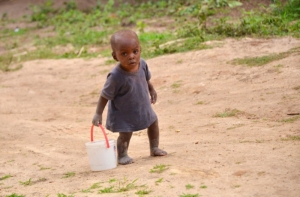Improving Living Conditions in Uganda
 Uganda is a sub-Saharan country located in East Africa. Its capital is Kampala, and the country has a population of over 47 million. Living conditions in Uganda vary, with the poorest demographics suffering due to poor education and a subpar health care system. On the bright side, charitable organizations continue making efforts toward improving the living conditions in the country.
Uganda is a sub-Saharan country located in East Africa. Its capital is Kampala, and the country has a population of over 47 million. Living conditions in Uganda vary, with the poorest demographics suffering due to poor education and a subpar health care system. On the bright side, charitable organizations continue making efforts toward improving the living conditions in the country.
Accessibility to Water and Sanitation
As presented by WaterAid, 21 million people in Uganda lack access to clean water and eight in 10 do not have access to decent toilets. To improve hygiene quality in the country, WaterAid is supporting the Ugandan government’s plan to ensure clean water access for all by 2040.
Water.org is also making efforts to improve sanitation in the country. Since 2009, the organization has partnered with sector organizations such as Water and Sanitation for the Urban Poor as well as national governments and stakeholders. Its aim is to provide financing for water and sanitation projects in Uganda. As a result of the organization’s work, 517,000 Ugandans now have access to safe water and sanitary facilities at home.
Education
Uganda’s education shows a large divide between the richest and poorest parts of the country. According to the United Nations International Children’s Emergency Fund (UNICEF), secondary enrollment is five times higher for the richest 20% compared to the poorest 20%. Other factors, including teenage pregnancies and early marriage, cause many girls to miss out on their education. To combat these high levels of school absence, UNICEF supports various projects to make education safe, affordable and accessible for Ugandan children. The organization also focuses on future employment, with plans for 2025 that aim to provide adolescent boys and girls with active citizenship and career options.
Housing for Children
Currently, there are approximately 2.7 million children living in Uganda who lack any form of parental care. The organization estimates that 1 million children have lost their parents to AIDS.
SOS Children’s Villages is a nonprofit social development organization that aims to improve living conditions in Uganda by giving vulnerable children a safe home. In 2015, the organization aided 8,000 people through workshops covering topics such as parenting skills and the rights of children.
Medical Facilities
Although the overall health care system in Uganda has improved in the past few years, a scarcity of hospitals and doctors leaves many ill people lacking medical attention. The World Health Organization (WHO) recommends a doctor-to-patient ratio of 1:1,000. However, Uganda suffers a ratio 25 times worse than this recommendation, with a 1:25,000 doctor-patient ratio.
The low number of doctors is particularly an issue for residents living in rural areas, as most hospitals in the country are located in big cities, forcing ill people to travel miles on foot to seek medical attention.
Uganda experiences some of the highest infant mortality rates in the world due to a lack of support for pregnant women. In response to this, SOS Children’s Villages has opened three medical facilities in the country, providing antenatal and postnatal care. The organization has also created mobile clinics to provide medical support for people living in remote rural areas.
Looking Ahead
Although living conditions in Uganda have been challenging, charitable organizations operating in the country continue to make progress in bettering the situation. Also, there are plans in place to continue with the ongoing work in hopes of achieving even more progress. The success of these efforts can potentially transform the education and health care systems in Uganda and enable Ugandans to access better living conditions.
– Freddie Trevanion
Photo: Flickr
